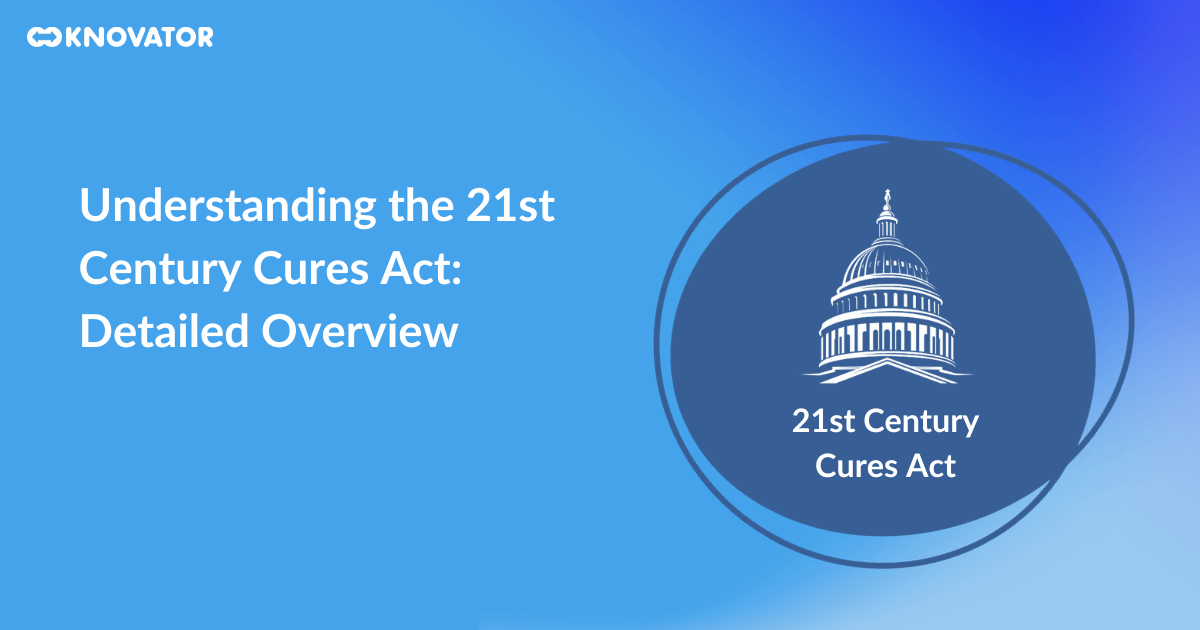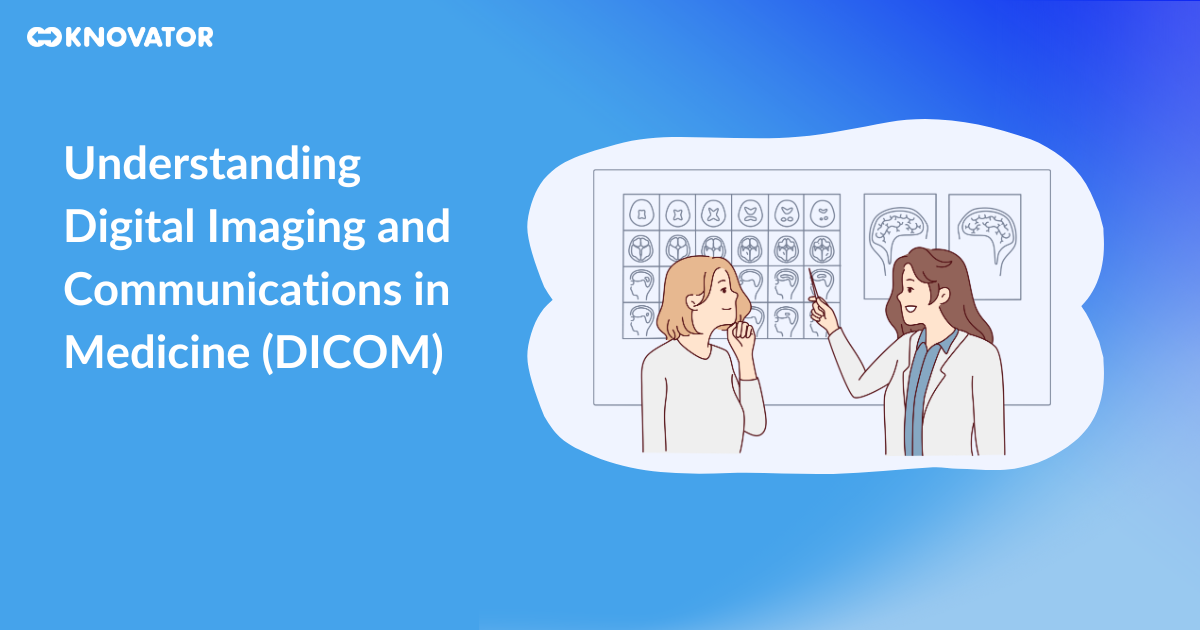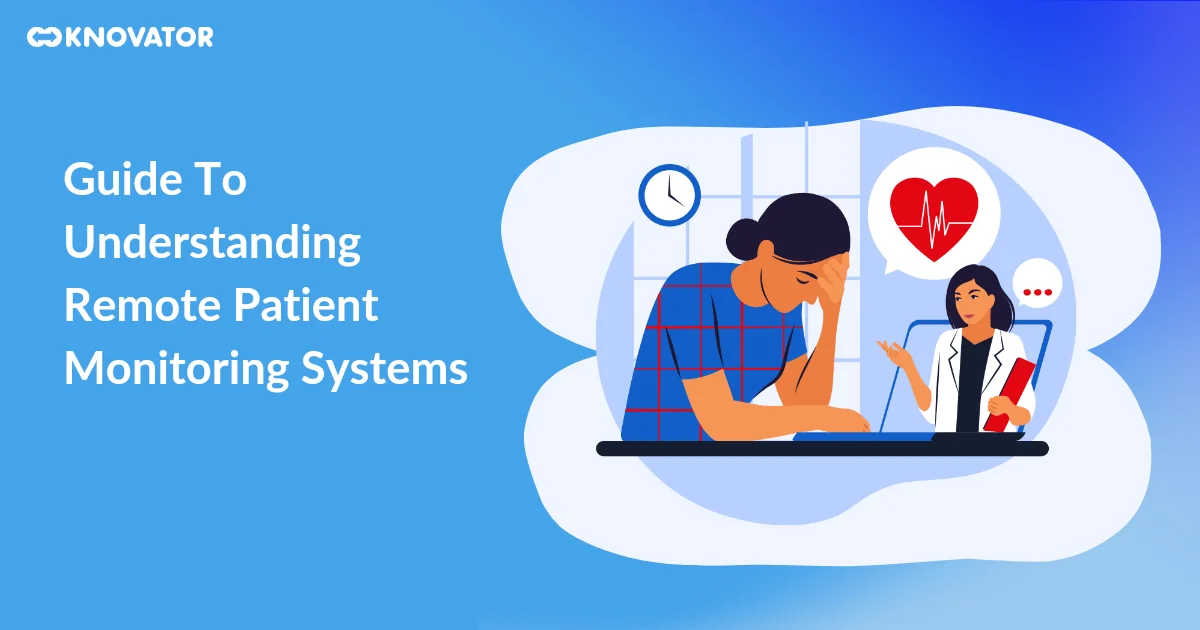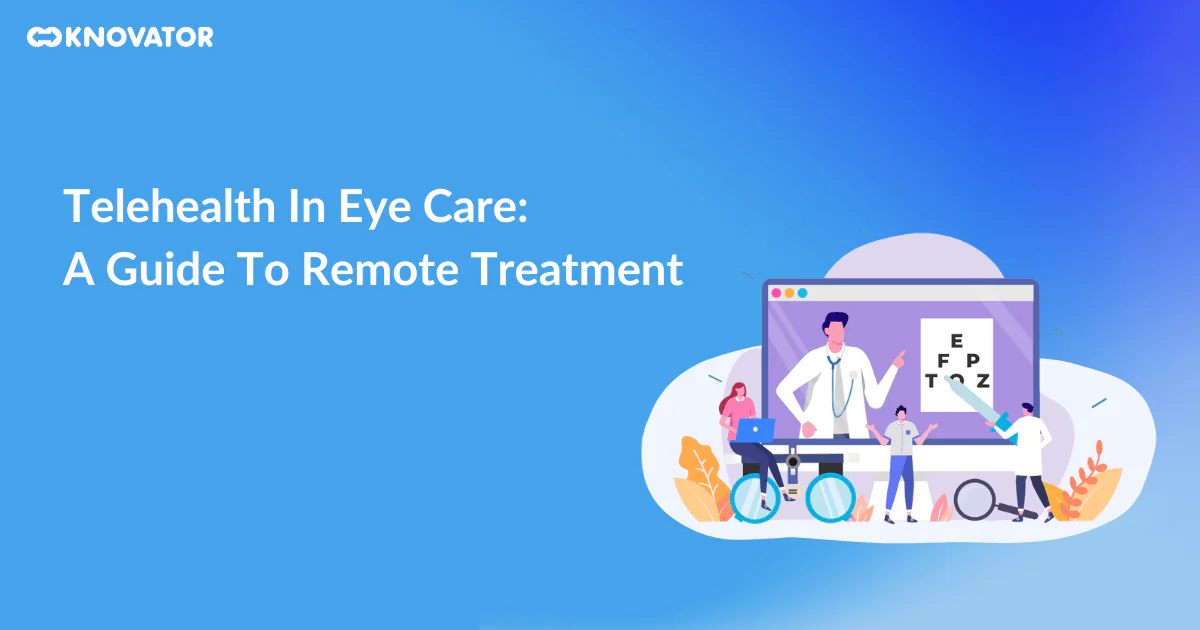Welcome to our deep dive into the 21st Century Cures Act. This landmark legislation, enacted in 2016, has revolutionized healthcare by accelerating medical product development and bringing the latest innovations and advancements to patients who need them faster.
History and Enactment of the Act
 The 21st Century Cures Act came into force on December 13, 2016, after a bipartisan effort in the U.S. Congress. The Act was a response to a growing need for a more modern approach to healthcare that could harness the power of scientific discovery and technological innovation to improve patient care and accelerate the development of new treatments and cures.
The 21st Century Cures Act came into force on December 13, 2016, after a bipartisan effort in the U.S. Congress. The Act was a response to a growing need for a more modern approach to healthcare that could harness the power of scientific discovery and technological innovation to improve patient care and accelerate the development of new treatments and cures.
The Act culminated in a multi-year process involving extensive consultations with stakeholders from across the healthcare spectrum, including patient groups, healthcare providers, researchers, and industry representatives. The goal was to identify the most significant barriers to medical innovation and patient care and develop strategies to overcome them.
One of the key events that led to the Act’s creation was the Elixir Sulfanilamide disaster in 1937, where over 100 people died due to a poisonous ingredient in a widely distributed drug. This tragedy highlighted the need for stronger regulations to ensure drug safety and efficacy and led to the implementation of the Federal Food, Drug, and Cosmetic Act in 1938. The 21st Century Cures Act is seen as a significant update to these earlier regulations, reflecting the advances in science and technology in the intervening years.
The Act has several key provisions that aim to modernize the healthcare landscape. These include measures to accelerate the development and approval of innovative treatments and cures, support greater use of digital health technologies, improve mental health services, and address the opioid crisis. The Act also includes provisions to enhance patient engagement in healthcare, recognizing that patients should be at the center of their care.
Since its enactment, the 21st Century Cures Act has significantly impacted healthcare in the U.S. It has led to new initiatives and programs that are advancing medical research, improving patient care, and driving innovation in the healthcare industry. However, the Act has its critics, and there are ongoing debates about its effectiveness and the need for further reforms.
Key Provisions of the Act
 The 21st Century Cures Act is a comprehensive piece of legislation with numerous provisions that touch on various aspects of healthcare. Here are some of the key provisions:
The 21st Century Cures Act is a comprehensive piece of legislation with numerous provisions that touch on various aspects of healthcare. Here are some of the key provisions:
- Accelerating Medical Product Development: The Act includes measures to speed up developing and approving innovative treatments and cures. This includes the creation of new drug approval pathways and the use of real-world evidence in the approval process.
- Investing in Research: The Act provides significant funding for medical research, including the Cancer Moonshot initiative to accelerate cancer research, the BRAIN initiative to improve our knowledge of diseases like Alzheimer’s, and the Precision Medicine Initiative to advance personalized medicine.
- Advancing Digital Health: The Act includes provisions to promote the use of health information technology and digital health tools. This includes measures to improve interoperability, enhance patient access to health information, and promote the use of telehealth.
- Improving Mental Health Services: The Act includes provisions to improve mental health services, including measures to strengthen mental health parity laws, improve access to mental health care, and promote early intervention for mental health conditions.
- Addressing the Opioid Crisis: The Act includes measures to address the opioid crisis along with funding for states to improve access to treatment for opioid addiction.
- Enhancing Patient Engagement: The Act recognizes the importance of patient engagement in healthcare and includes measures to enhance patient participation in the healthcare process. This includes provisions to improve patient access to health information and promote the use of patient-reported outcomes in care delivery.
These are just a few of the many provisions in the 21st Century Cures Act. Each of these provisions has its own implications, which are being felt across the healthcare landscape.
Impact on Healthcare
 The 21st Century Cures Act has had a profound impact on healthcare, particularly in the areas of medical research, patient care, and health technology.
The 21st Century Cures Act has had a profound impact on healthcare, particularly in the areas of medical research, patient care, and health technology.
Regarding medical research, the Act has provided significant funding for initiatives like the Cancer Moonshot, the BRAIN initiative, and the Precision Medicine Initiative. These initiatives are advancing our understanding of complex diseases and accelerating the development of new treatments and cures. For instance, the Cancer Moonshot initiative has led to new collaborations and research projects that are helping to speed up progress in cancer research.
In patient care, the Act has introduced measures to improve mental health services and address the opioid crisis. It has strengthened mental health parity laws, improved access to mental health care, and promoted early intervention for mental health conditions. It has also provided funding for states to improve access to treatment for opioid addiction. These measures are helping to improve the quality of patient care for those with mental health conditions and substance use disorders.
In health technology, the Act has promoted the use of health information technology and digital health tools. It has introduced measures to improve interoperability, enhance patient access to health information, and promote the use of telehealth. These measures are helping to modernize healthcare delivery and improve patient engagement in their care.
However, the Act has also faced criticism. Some argue that the Act’s measures to speed up drug approval could compromise patient safety by allowing drugs to be approved based on less rigorous evidence. Others argue that the Act does not do enough to address high drug prices, a major concern for many patients.
Businesses Affected by the Act
 The 21st Century Cures Act has implications for several businesses in the healthcare sector. These include pharmaceutical companies, biotech firms, medical device manufacturers, health technology companies, healthcare providers, and more.
The 21st Century Cures Act has implications for several businesses in the healthcare sector. These include pharmaceutical companies, biotech firms, medical device manufacturers, health technology companies, healthcare providers, and more.
Pharmaceutical and biotech companies, for instance, are affected by the Act’s measures to speed up drug development and approval. These measures can help these companies bring their products to market more quickly, but they also raise questions about the standards for drug approval.
Medical device manufacturers are affected by similar provisions in the Act. The Act includes measures to streamline the approval process for medical devices, which can help these companies bring their products to market faster.
Health technology companies are affected by the Act’s provisions on health information technology. These provisions promote using health information technology and digital health tools, creating new opportunities for these companies.
Healthcare providers are affected by the Act’s measures to improve patient care. These include measures to improve mental health services, address the opioid crisis, and promote patient engagement in care. These measures can help providers improve the quality of care they deliver but also come with new requirements and challenges.
Overall, the 21st Century Cures Act is reshaping the healthcare landscape, creating new opportunities and challenges for businesses in the sector. These businesses must understand the Act’s provisions and implications to navigate this changing landscape effectively.
Case Studies
 The 21st Century Cures Act has been instrumental in several cases, demonstrating its impact and effectiveness in healthcare.
The 21st Century Cures Act has been instrumental in several cases, demonstrating its impact and effectiveness in healthcare.
One notable case is the Cancer Moonshot initiative, a project to accelerate cancer research. The initiative, funded by the Cures Act, has led to significant advancements in cancer treatment and prevention. For instance, it has facilitated the development of new immunotherapies, which use the body’s immune system to fight cancer. The initiative has also promoted collaboration among researchers, leading to breakthroughs in understanding the disease.
Another case is the BRAIN initiative, which seeks to revolutionize our understanding of the human brain. Funded by the Cures Act, the initiative has led to the development of new technologies that allow scientists to study the brain in unprecedented detail. This has paved the way for new treatments for neurological disorders like Alzheimer’s and Parkinson’s disease.
The Cures Act has also played a crucial role in addressing the opioid crisis. It has provided funding for states to improve access to treatment for opioid addiction. This has helped many individuals recover from addiction and has contributed to a decline in opioid overdose deaths in some areas.
However, the Act has also faced criticism in some cases. For instance, some argue that its measures to speed up drug approval could compromise patient safety. They point to cases where drugs were approved based on less rigorous evidence and later found to have serious side effects.
Controversies and Criticisms
 While the 21st Century Cures Act has been hailed for its advancements in healthcare, it has also faced its share of controversies and criticisms.
While the 21st Century Cures Act has been hailed for its advancements in healthcare, it has also faced its share of controversies and criticisms.
One major criticism is that the Act’s measures to speed up drug and device approval could compromise patient safety. Critics argue that approving drugs and devices based on less rigorous evidence could lead to unforeseen side effects or complications. They point to cases where drugs were approved based on surrogate endpoints, which are indirect measures of a drug’s effect rather than direct evidence of clinical benefit.
Another controversy surrounds the Act’s funding. While the Act provides significant funding for medical research, some argue that it does not do enough to address the high cost of drugs. They argue that the Act should have included measures to control drug prices, a major concern for many patients.
The Act has also faced criticism for its impact on the FDA. Some argue that the Act puts too much pressure on the FDA to approve drugs and devices quickly, potentially compromising the agency’s ability to ensure their safety and effectiveness.
Despite these controversies and criticisms, the Act has made significant contributions to healthcare. It has accelerated medical research, improved patient care, and promoted the use of health technology. However, it’s crucial to continue monitoring the Act’s implementation and impact to ensure it achieves its intended goals without compromising patient safety.
Future Implications
 The 21st Century Cures Act has set the stage for a future where medical research and patient care are more efficient, effective, and patient-focused. However, it also presents several implications that need to be considered.
The 21st Century Cures Act has set the stage for a future where medical research and patient care are more efficient, effective, and patient-focused. However, it also presents several implications that need to be considered.
One of the most significant implications is the acceleration of the drug and device approval process. While this can bring life-saving treatments to patients faster, it raises concerns about patient safety. The healthcare industry and regulatory bodies must find a balance between speed and safety, ensuring that new treatments are effective and safe.
The Act’s emphasis on health technology also presents implications for the future. Promoting health IT and data sharing can lead to more personalized and efficient care. However, it also increases concerns about data privacy and security. As health data becomes increasingly digital, protecting patient information will become even more critical.
The Act’s funding for medical research also has future implications. While it provides much-needed resources for research, it also raises questions about the sustainability of such funding. Future legislation must address how to maintain or increase funding for medical research in the long term.
Lastly, the Act’s impact on the FDA could have long-term implications. The increased pressure on the FDA to approve drugs and devices quickly could potentially affect the agency’s ability to ensure the safety and effectiveness of treatments. This could lead to changes in how the FDA operates in the future.
Keyword Research and PAA Exploration
 Keyword research and exploring the People Also Ask (PAA) section are crucial aspects of SEO writing. They help identify what users are searching for and provide insights into how to structure and optimize content.
Keyword research and exploring the People Also Ask (PAA) section are crucial aspects of SEO writing. They help identify what users are searching for and provide insights into how to structure and optimize content.
For the 21st Century Cures Act, keywords like “21st-century cures act compliance,” “cures act 2022,” and “What is the 21st-century cures act” are important. These keywords indicate that users want to understand the Act, its compliance requirements, and future implications.
The PAA section provides further insights. Questions like “What is the purpose of the 21st Century Cures Act?” and “What are the chief provisions of the 21st Century Cures Act?” suggest that users are looking for a comprehensive overview of the Act. This information can guide the content creation, ensuring it meets users’ needs and answers their questions.
However, keyword research and PAA exploration are not one-time activities. They should be conducted regularly to keep up with changes in user behavior and search trends. This iterative approach ensures the content remains relevant and valuable to users.
Feedback and Continuous Improvement
 Feedback is a valuable tool for continuous improvement. It provides insights into what is working well and what can be improved. For a blog on the 21st Century Cures Act, feedback can come from various sources, including comments on the blog, social media interactions, and website analytics.
Feedback is a valuable tool for continuous improvement. It provides insights into what is working well and what can be improved. For a blog on the 21st Century Cures Act, feedback can come from various sources, including comments on the blog, social media interactions, and website analytics.
Reader comments can provide direct feedback on the content. They can highlight areas that readers found helpful or need more clarification. Social media interactions can also provide feedback. Social media shares, likes, and comments can indicate which parts of the content resonated with readers.
Website analytics can provide more quantitative feedback. Metrics like page views, time on page, and bounce rate can indicate how engaging the content is and whether it meets users’ needs.
Based on this feedback, the content can be revised and improved. This might involve adding more information, clarifying certain points, or improving the content’s readability. This iterative approach to content creation ensures that the content remains relevant, valuable, and user-friendly.










